Ants Treatment Singapore (The Ant Exterminator)
How to get rid of ants through our ants pest control Singapore residential & commercial service?
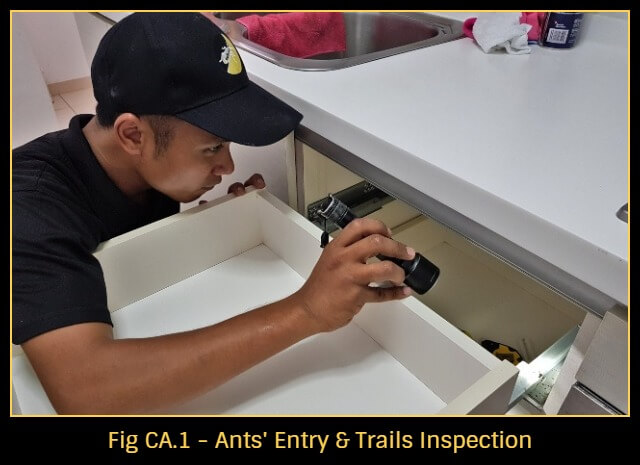
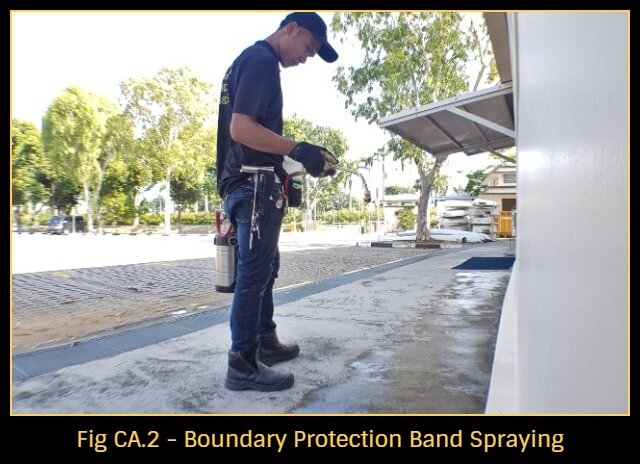
Our ant extermination methods: A thorough assessment will be conducted, to identify the entry points and paths of the ants. Such an assessment includes interviewing the occupiers, to pinpoint the last seen traces of the ants. In cases where no active trails are seen, communications with clients, become extremely useful in localising the ants’ movements, as they leave minimum traces. All previously noted and active ants’ trails will be dealt with, through the process of baiting. Ants baiting is a process where ant baits are being placed in the paths of these ants. These baits come in varying forms such as gel, granules and powder for different types of application. Depending on the type of Singapore ants causing the infestation, we might rotate between oil, protein and sugar-based baits for better acceptance. Baiting also takes advantage of a natural process (trophallaxis), where ants share liquid food with one another. By doing so, the consumed pesticide spreads effectively via horizontal transfer, across the colony. The slow poisoning effects of baiting, also allows more time for a more thorough transfer. In no time, most of the ants in the colony, would be affected and the colony would cease to function. Such a strategic way of ants control, is why we consider baiting, to be the best way to get rid of ants. Apart from baiting, we also perform residual spraying, as an additional ants control service for our clients. Non-repellent based residual spraying, is extremely beneficial in controlling ants, that crawl along wall edges, skirtings and base of door frames. Whereas repellent based residual spraying, is most useful in offering perimeter defence by deterring entry. Both types of solution provide round-the-clock active protection.
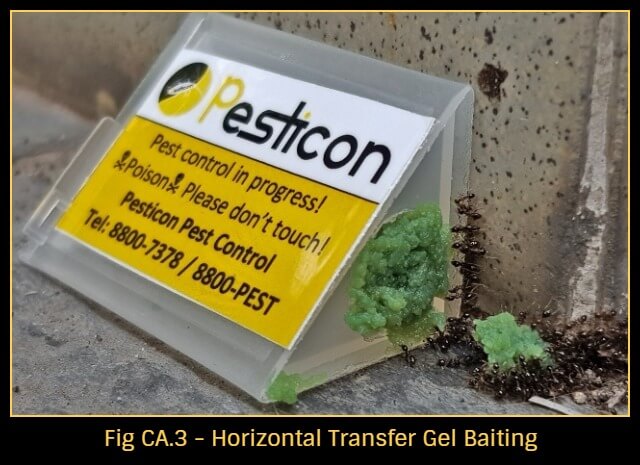
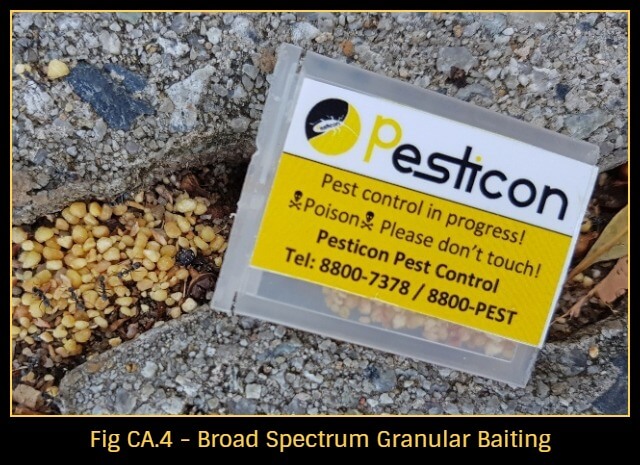
Ants control Singapore
Ants are beyond doubt amongst the most selfless in the insect kingdom. It lives not for itself, but for the betterment of its colony. Food found by foraging ants will be let known to other ants, through pheromones left by the foraging ants. Therefore, ants’ trails usually get longer, until the food source disappears or when it’s disturbed. Ants generally breed fast and multiply at an alarming rate. With such unity and exceptional productivity, it’s little wonder why they are tough to control, using DIY methods alone. Their seemingly uncontrollable status, frequently cause our clients to gravitate, on how to kill ants and how to get rid of ants permanently. If you are facing any ant problem, despite your best efforts in controlling them, and you need help in getting rid of ant infestation Singapore, give Pesticon a call at 8800-7378 (8800-PEST). We are more than willing to pay you a visit and show you how to get rid of ants at home via Pesticon’s ant pest control.
Health risks: Ants generally do not pose any significant health risk, but they can contaminate food by crawling over food and leaving behind contaminants picked up from elsewhere. Regardless of their size, Ants bite may cause allergy reaction, pain and swelling.
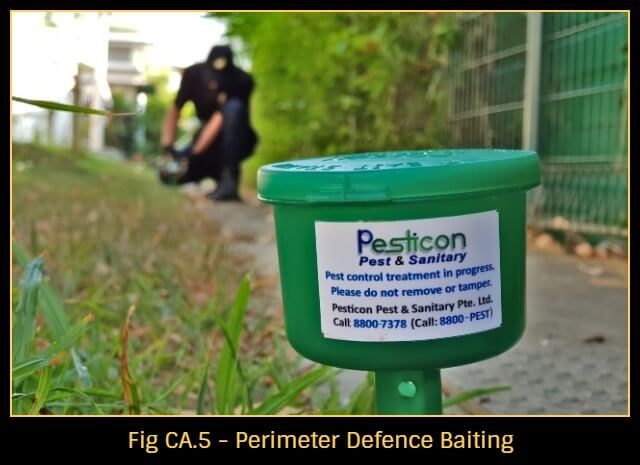
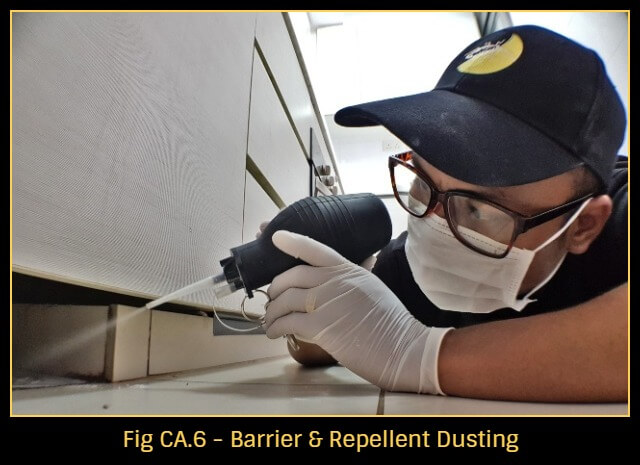
Common types of ants in Singapore
Ghost Ants Singapore
Ghost Ants aka Sugar Ants: These ants which are sometimes, affectionately known as ants with white backside, belong to a species of ants, which goes by the scientific name of Tapinoma Melanocephalum. The dual coloured Ghost Ant (Sugar Ant) is minuscule, and seldom exceed 2mm in length. Its dark coloured head and thorax coupled with translucent legs and abdomen, makes the Sugar Ant (Ghost Ant) appears smaller than it really is. These rather slow-moving ants adapt well to both indoor and outdoor habitat, and they have a penchant for sugary food like cakes, syrup, fruits, etc. When lure by food, they can form trails quickly and disappear just as quick. They frequently enter structures through wall voids, foundations and plants. In a typical infestation, we usually find them at door frames’ bases, skirting mouldings, kitchen cabinets, masonry cracks and crevices. Ghost Ants usually do not cause must problems for our clients, as they are generally inconspicuous due to their size. However, if your Sugar Ants infestation is too heavy. and you would like to find out how to get rid of Ghost Ants or how to get rid of Sugar Ants, engage us for our premium Singapore ants treatment.
Pharaoh Ants Singapore / Little Red Ants Singapore
Pharaoh Ants: This species of ants was likely to be mistaken, as part of ancient Egypt’s biblical plague and therefore earning itself its notable name. Locally, our clients commonly refer to them as Little Red Ants, since they are small and reddish brown in colour. Scientifically they are known as Monomorium Pharaonis. Pharaoh Ants are a major cause of nuisance globally and have been recorded in all continents except Antarctica. In our pest control industry, they are known to be notoriously difficult to control. At approximately 2mm, they are slightly larger than most Ghost Ants. Apart from their physical appearances, both Pharaoh Ants and Ghost Ants share almost similar traits, in their diet preferences and budding behaviour. Budding is a process where ants of the existing colony, split to start new colonies elsewhere. Budding by itself is an unavoidable natural process, where colonies proliferate. However, from the pest control standpoint, it can also suggest the usage of wrong pesticides. Some types of pesticide, are known to trigger the budding process in ants. In this aspect, homeowners who are inexperienced may inadvertently cause the growth of Pharaoh Ants infestation, rather than controlling it. If this is the problem you are facing, give us a call and let our ant exterminator demonstrate how to get rid of ants.
Crazy Ants Singapore
Black Crazy Ants aka Longhorn Crazy Ants: Scientifically, they are known as Paratrechina Longicornis. Crazy Ants measure approximately 3mm in length and are brownish black with a hint of iridescence blue. They have disproportionately long feelers and legs, making identification a breeze. Depending on their seasonal needs, they readily consume sweet, oily and proteinous food. Crazy Ants are widespread around the world and thrive in both indoor and outdoor environments. For indoors, they usually nest in cracks and crevices that are moist. For outdoors, they can be found near wetter substrate like damp soil. They usually explore their surrounding in great distances, away from their nests. This makes tracking down their nests a challenge and total elimination even tougher. Their locomotion is equally interesting as well. Instead of trailing in a straight line as most common ants do, they crawl around in a zig-zag, back and forth sequence. Such rapid and erratic movements are likely to be the contributing factor to their common name. If these ants are a common sight in your premises and you wish to know how to get rid of Crazy Ants, then call us immediately for Pesticon’s anti ants pest control Singapore.
Black House Ants Singapore
Black House Ants: The Black House Ant (Ochetellus Glaber) is a common breed of ants, found in both urban and rural settings. These aptly named small black ants are occasionally mistaken by our clients as the Black Crazy Ants. Identification isn’t too hard if you look close enough. Two distinguishing features between them, are their trailing movement and general appearance. The black ant looks stockier and trails in an orderly fashion, whereas the Black Crazy Ant looks leaner and trails in an erratic manner. The Black House Ants which measure 2-3 mm lengthwise, are omnivorous and eat a wide variety of food. In human habitats, they forage for your usual kitchen scraps. In the outdoor setting, they tend to feed on honeydew secreted by sap-sucking insects. If you are troubled concerning how to get rid of black ants in house, call Pesticon for professional pest control services.
10 fun facts about ants
Residing in a tropical country like Singapore, most Singaporeans are no stranger to trailing ants, flying ants or ants with wings. Most people would never think twice about their encounters with ants in our fast-paced world. Regardless of how we view them, ants are truly amazing survivors. Read on to learn more about them.
-
Great farmers
Yes, researches have shown that ants were farmers, before humans started Ants were farming fungi in their underground networks, millions of years before us. -
No ears
Ants don’t have ears. They use vibrations picked up by their feet, as a way of “hearing”. -
Powerlifter
These insects are unbelievably strong for their size and weight. They have the ability to carry 50 times their own body weight. To match that, an average man weighing 70kg needs to carry a load of 3500kg. -
Two stomachs
It’s true that worker ants have two stomachs. However, it’s not for hoarding their favourite food. One stomach is used for their own consumption, whereas the other is used as a storage, to feed their fellow ants through a process known as trophallaxis. -
No lungs
Well, ants do not have lungs. Their size and body structure, can’t accommodate the respiratory systems like humans and animals. They breathe through small holes which are known as spiracles. Oxygen is distributed throughout their bodies, when air enters these external openings. -
Even ants practice slavery
Slave-making ants do exist. The Polyergus Lucidus species of ants is known to raid other ants’ colonies, to steal eggs and pupae. This practice is known as dulosis and is carried out by these slave-raiding ants, as they are incapable of sustaining their own colonies by themselves. -
The unlikely water sportsmen
A species of trap-jaw ants can swim extremely well and do so at 3 body lengths per second. The Polyrhachis Sokolova species of ants can stay and nest underwater, in the estuarine mud of the intertidal zone. Fire Ants have a hydrophobic coating on their exoskeleton that helps form rafts with their own bodies. With these living ‘rafts’, Fire Ants are able to survive floods that will drown other ants. -
They survived what killed dinosaurs
A study by the Florida State University and Harvard University, revealed that ants have been around since the Cretaceous Period (approx 145 million years ago). -
Breed without a mate
Some species of ants are asexual. Basically, what this means is that they are able to reproduce without a partner. They do so by cloning. -
The selfless warrior
Some soldiers ants are known to sacrifice themselves when attacked by neighbouring colonies. They do so by plugging the nest entrances with their heads.